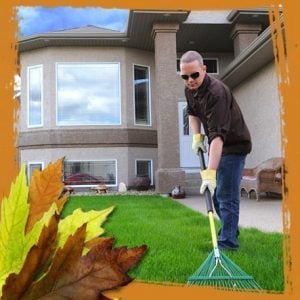Backyard Composting

The Basics
The microbiological process that creates compost is the natural process through which plants and other organic wastes are broken down. Doing the work of creating compost are worms, insects, fungi, bacteria, and other microorganisms that help to process dead materials.
The Golden Rule of Composting
Composting is a natural process that will pretty much happen no matter what. There is no need to obsess over creating a rapid, robust compost because even a failed compost heap will eventually succeed. That said, a very effectively created compost heap will proceed to finished compost much, much more quickly (and can be a strangely rewarding accomplishment).
The Requirements
For the composting process to occur, oxygen, water, some warmth, and a good ratio of carbon-based to nitrogen-based materials are necessary. Fortunately, every one of these materials is abundantly available and should be essentially free!
The Bin
Many different compost bins are available, for many different prices (naturally). In fact, many cities offer conservation incentives through which they offer bins at highly discounted rates. Which one should you get? Here’s the beautiful thing – it really doesn’t matter. You will run into trouble if your bin is too small, but otherwise, any old container will do. In fact, no container at all is just fine too! Some of the best compost heaps are just that – a heap in a corner of the yard with a small enclosure or picket fence to keep things looking tidy.
The Ingredients
The insects and microorganisms that do the work of composting will come no matter what you do. Fortunately, putting out the right combination of nitrogen- and carbon- based materials will be like offering them a free all-you-can-eat buffet. Carbon-based materials to add to your compost should be available in abundance. These are the brown materials such as dead grass clippings, leaves, and even shredded cardboard. Nitrogen-based, or green, materials, can take the form of fruit peels, green grass clippings, and food wastes (avoid adding dairy and meat wastes). The ideal ratio for your compost is about 30 parts carbon to 1 part nitrogen, but anywhere in that neighborhood will work just fine.
The other two ingredients you will need to ensure a speedy process are water and air. Because the center of your heap will retain a great deal of water, the compost should not need to be wetted very often except during dry spells.
Oxygen is introduced by turning the compost (a pitchfork works best) about once a week, or when the compost slows down.
What (you hope!) Will Happen
If you have built a heap with a good carbon to nitrogen ratio, and one that’s sufficiently damp and oxygenated, the composting process should start immediately. After a while (approximately a day), when the process peaks, the center of your pile will be producing heat (sometimes a surprising amount of heat!). It is up to you whether you want to completely compost a batch of wastes and then start over, or simply add wastes as they become available. When the center of the pile cools, the process has slowed and it’s probably time to turn your pile. Repeat until you’ve got nothing left but black gold.
The Product
When your compost has been – well – composted – what will remain is a moist, black, sweet-smelling mulch approximately the consistency of soggy cardboard. Nature’s most potent fertilizer, compost can be spread on your flowers, in your garden, on your lawn, and anywhere else you want healthy, strong plants.
Skip the trash can for some of your waste – six weeks in your compost heap can break down more material than six years in a landfill – and the end result is free, natural fertilizer for your efforts!
Happy Composting!
